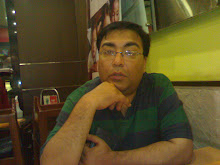
The deadly Dengue virus is busy stalking its prey in Delhi and adjoining areas. The hospitals are struggling to find beds to accomodate people who want to get admitted, many out of fear rather than a positive diagnosis. The blood banks are busy dispensing blood and platelets to an increasingly desperate patient population. The pharmacists are busy stocking and dispensing anti viral medications to all and sundry.
Dengue has almost become an annual phenomenon in Delhi. It is around this time, when the monsoons are at their fag end when Delhi gets its share of Dengue. The municipal authorities are busy defogging the city, releasing large advertisements in local newspapers advising citizens to ensure that they do no have stagnant water bodies at home and that they remain covered head to toe so that the dreaded aedes mosquite does not get an opportunity to bite. I am sure the chief minister will soon be broadcasting appeals on the local radio and TV stations asking people to watch out against the mighty 'aedes' mosquito, which strikes during the day. The opposition politicians will also soon get into the act by blaming the ruling politicos for not taking enough precautions and subjecting the hapless citizens of Delhi to this menace. In short the Dengue circus has been unleashed on Delhi
The disease itself has been known to mankind since the mid 1779. The first recorded epidemic happened almost simultaneously in 1780's in Asia, Africa and North America. Dengue fever has become more common in the closing decade of the last century and is now considered to be the second most common mosquito borne disease after malaria. More than 40 million dengue fever cases are being reported annually across the globe since the late 1990's. The recent outbreaks of Dengue epidemic have been recorded in Brazil, Parague, Cuba and Mexico in South America and Indonesia, India, Pakistan, Malaysia and the Phillipines in Asia.
The symptoms of the disease include a sudden onset of fever with severe headache and chills, muscle and joint pains and characterstic red rashes that start from the lower limbs. Gastritis, nausea, abdominal pain, vomiting and diarrhea are also often evident. Severe cases may result in bleeding from nose, mouth and the gums.
Prevention measures include preventing the breeding of the mosquito larvae as well as personal protection against mosquitos. The larvae grow in stagnant water bodies around the household such as water stored in buckets, tanks, flower pots, coolers, plastic mugs etc. The best way to avoid larvae breeding is to use fresh water for daily use and avoid storing water. Personal protection agaisnt mosquitos will imply using mosquite repellant creams, wearing protective clothing, which covers arms and legs and using mosquito nets.
The hospitals as I mentioned earlier are busy. The patients even with mild symptoms and without any confirmation of dengue want themselves admitted. Those who do have dengue are being provided support and care, which includes a course of anti-viral, hydration through oral and intravenous fluids and blood/platelet transfusions if required.
No one really knows how to control this increasingly common and sometimes deadly disease. Vaccines are still under development and as yet there aren't really any effective ones available. The mosquitos are a reality in hot and humid climates and inspite of all precautions mosquitos can hardly be completely avoided.
In the absence of anything else, education about the disease and the steps required for its prevention remains the most potent antidote.
Pic from http://www.flickr.com/ owned by Lord V

No comments:
Post a Comment